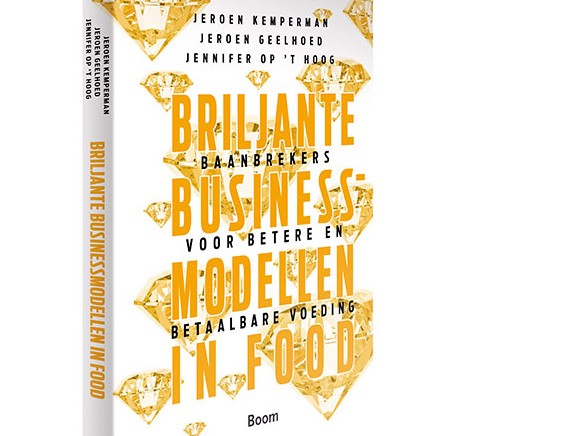
Food will be one of society’s biggest challenges in the future. There are several aspects to that challenge; on the one hand the aim is to produce healthy and sustainable food, and on the other the challenge lies in keeping things affordable and scalable. And the most difficult thing of all is to combine the two. This article briefly shines the spotlight on two groundbreaking cases.
It’s not difficult to find small-scale initiatives in which organisations are producing healthy and sustainable food. However, the fact that they are on such a small scale, combined with the associated price, offers little hope that these companies will really offer a lasting solution to the problem. Meanwhile, there are the large organisations that supply scalable and affordable products which thus reach the masses, yet are not particularly healthy or sustainable. The question is: where can you find organisations that do both? And what can we learn from them? That was our quest in our book titled Briljante businessmodellen in food – baanbrekers voor beter en betaalbaar eten (‘Brilliant business models in food - pioneers for better and affordable food’). And yes – we found quite a few. After looking at the entire chain, from farm to fork, we ultimately selected 20 of them for inclusion in the book.
People often have the idea that in order to produce food healthily and sustainably, we need to return to the craftsmanship and the methods of bygone times – but the brilliant business models in food show that the opposite is the case. Technology is an important ‘ingredient’ in affordable, scalable, sustainable and healthy food. One example of a technology-driven company is California-based Hampton Creek, which displays all the characteristics of a Silicon Valley start-up except it’s in the food sector.
‘Technology is an important ‘ingredient’ in affordable, scalable, sustainable and healthy food’
Hampton Creek aims to produce food that is ten times cheaper, more sustainable, more humane, more nutritious and safer than conventional food. To start with, Hampton Creek wants to eliminate eggs from the food chain in order to reduce the ecological footprint and put an end to the suffering of battery hens. Hampton Creek has succeeded in making an egg substitute which it uses as the basis for its mayonnaise, called ‘Just Mayo’. The company is not shy about announcing how groundbreaking and how fantastic this is, and foresees a future in which eggs and other ingredients in other products can be replaced by plant-based components. Hampton Creek has consciously created a hype around itself – and has sometimes even given it a little helping hand. By the way, that hype has resulted in a share price that is more typical of a tech company than a food manufacturer. The product is healthier and the price is, for once, lower than regular A-brand mayonnaise.
While it’s fun to write about brilliant business models (and our series of ‘Brilliant business model’ books now comprises four different ones), you also have to do some real work of course. After all, you shouldn’t let good talent go to waste. Hence, some of the authors of Briljante Businessmodellen in Food are directly involved in one of the cases, namely &samhoud food. In conjunction with top chef Moshik Roth, head of a two-star Michelin restaurant, the company has created a food lab for new ingredients and products. Driven by the desire to inpsire people to eat more vegetables, the food lab develops new products based on lots of vegetables and without artificial additives. The new concepts are eventually developed into products that are sold as ready meals in stores, company canteens and (fast-food) chains. The restaurant itself forms the heart of the business model, the lab, the brand and the concept store.
What is interesting about organisations like the ones described above is that, rather than focusing on the unhealthy food that people should stop eating, they shine the spotlight on the healthy, convenient and better alternative that they hope will tempt people to make the change. Taking unhealthy eating habits and the hard-to-resist unhealthy products as their starting point, the entrepreneurs are trying to turn that around. The healthy alternatives are often related to the introduction of meat substitutes such as tomato-based hamburgers or ‘cordon rouge’, or the use of insects as a source of protein, such as mealworm ‘meatballs’ or insect-based energy bars. Whereas idealists previously chose to go on the attack, they now seem to be opting to set up their own companies so that they themselves can make a difference. At the same time, they stay close to consumers’ ingrained behavioural patterns and habits. The fact that the new entrepreneurs are not only saying that things must be done differently but are also showing and allowing people to taste how such a brilliant business model can look is producing encouraging, valuable and tasty results.
*The authors Jeroen Geelhoed (&samhoud), Jeroen Kemperman (Zilveren Kruis, Achmea), and Jennifer op ‘t Hoog (Achmea) previously co-published the books Briljante Businessmodellen, Briljante Businessmodellen in de Zorg and Briljante Businessmodellen in Finance.
Source: © Boom